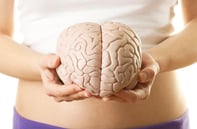Published on
Learning, The Brain, and Memory: Five Steps to Support Effective Learning

While most educators are not trained in neuroscience, of particular interest to educational research are advancing discoveries in learning, the brain and memory. Dr. Thad A. Polk, a cognitive neuroscientist and professor of psychology at the University of Michigan, defines learning as “acquiring knowledge or behavioral response from experience” and memory as “the result of the product of learning.” Learning is about acquiring new information and memory is the storage and retrieval of this information.
Dr. Polk encourages students of all ages to adopt a holistic approach to optimize learning, improve brain health and increase the power of memory skills. This holistic approach is based on scientific research from the fields of neuroscience, psychology and education. The areas where these fields intersect is often referred to as neuroeducation.
To paraphrase Dr. Mariale Hardiman of Johns Hopkins University and founder of Brain Targeted Teaching®, neuroeducation may help educators focus on “how students learn rather than on merely what they learn.” And we may also need to “unlearn” certain practices that students and educators perceive as effective yet have minimal impact on memory retention. In this article, we will explore 5 points to effective learning promoted by Polk and supported by decades of research.
Point 1 – Be Positive
The work of Dr. Carol Dweck from Stanford University and co-founder of Mindset Works shows that adopting a positive attitude or “growth mindset” is the most important first step of learning success. A growth mindset is our belief that intelligence is not fixed and can be developed.
A basic understanding of neuroanatomy helps us appreciate the human brain is the most sophisticated biological organism in the known universe – and we each have one. The brain always learns whether we want to or not for our brains are always in the “on position” for learning through a process called neuroplasticity. We need to take advantage of this wonderful learning function through a positive belief in our ability to learn.
This positive mindset leads the learner down a path of achieving higher self-efficacy. Self-efficacy is our overall belief in our ability to learn and succeed. A growth mindset drives a higher desire to learn and achieve; the more we learn, the more our brains want to learn. The better we perform in learning, the more we believe in our abilities to learn. Belief in success breeds more success.
Point 2 – Be Strategic
Effective learning requires a strategic and deliberate approach to optimize effort and time. Establishing 2-3 realistic, achievable yet “stretch” goals is an effective strategy to reach larger learning targets. These 2-3 goals help us “scaffold” our learning to more difficult levels. Each time we meet our goals, we will be more motivated to move forward to the next goal.
For example, say my goal is to learn a new language (Spanish). A realistic yet stretch goal for me is to learn and use 100 new words a month until I learn 1,200 words by the end of the year. Practice time of 15 minutes a day (spacing learning) will assist me in this long-term learning and memory retrieval process.
Practice is a powerful use of time in learning. Polk encourages students to use proven learning science strategies like spacing learning over time periods and avoiding “cramming,” challenging ourselves with stretch tasks beyond our current skills, interleaving learning by switching between different types of topics and problems , and testing or quizzing ourselves on learned material. These strategies will produce better long-term memory similar to how daily exercise builds muscle mass.
Point 3 – Learn Actively
In the words of Polk, “we learn better when we are actively engaged in processing information rather than passively encoding it.” A great article published by the American Psychological Association shows that highlighting information in a book, or underlining information in lecture notes, or re-reading/re-listening to a lecture more than once, has minimal impact on the retention of that information or success in tests and assessments). While many students believe these practices are impactful, science tells us otherwise. These strategies are passive approaches and detract us from active and more successful strategies. Active learning strategies include:
- Generating explanations for material we read in a textbook or hear in a lecture;
- Testing ourselves on material using flashcards;
- Practicing problem-solving like math calculations;
- Developing key questions about the material we read in a text or listen to a lecture and then quiz ourselves on those questions; and
- Applying the Cornell University note-taking system to study material.
Practices that engage us with material are more successful than passive approaches. Finally, in the words of New York University neuroscientist Dr. Wendy Suzuki, “The best way to learn something deeply is to teach others about it.”
From personal experience, the preparation for and teaching of others brings me to actively engage with information and improve retention. Preparing quiz material, tests and study questions for students enhances my understanding and motivates me to learn more and deeply.
Point 4 – Consider the Source
Identifying solid and reliable sources of research and/or scholarly-based information that will challenge and engage us is a critical strategy to enhance and strengthen our neural networks. Learning new, challenging information enhances cell growth in the section of our brain called the hippocampus and strengthens the connection of cells in surrounding areas of the cerebral cortex (neuroplasticity). Learning makes our brains bigger and stronger.
In the internet age, we must consider the source, question the information, verify the qualifications of the provider and consider the evidence that supports the research. A healthy skepticism is a good measure to verify reliable sources of information. Finally, seeking different points of view from our own helps us to learn and grow. Engaging with different perspectives will stretch our knowledge and make us better, more patient learners in the long term.
Point 5 – Take Care
Scientific research proves that taking care of our bodies protects our brains. In particular, to optimize our learning, we need to stay active, eat right and sleep well. Staying active includes intellectual stimulation and physical movement.
Current research shows that engaging and challenging mental stimulation such as learning another language, practicing a musical instrument or mastering a difficult hobby like painting, improves brain function. Stronger evidence exists that physical exercise, or whatever helps the heart, helps the brain. Current research from the Mayo Clinic shows that, for the average adult, 10,000 steps per day, 150 minutes of cardio activity per week and 30-60 minutes of strengthening exercises completed two times per week, are optimal for a healthy heart and brain.
Regarding diet, research shows that a variant of the Mediterranean diet is most impactful for heart health and cognitive function. Finally, a restful 7-8 hours of sleep per day, for most adults, improves brain function and protects brain health.
– – – –
References:
Ackerman, C.E., (2019, March 7). What is Self-Efficacy in Psychology? Retrieved from: https://positivepsychology.com/self-efficacy/
Dweck, C. (2016, January 13). What Having a “Growth Mindset” Actually Means. Retrieved from: https://hbr.org/2016/01/what-having-a-growth-mindset-actually-means
Hardiman, M. (2012). The Brain Targeted Teaching Model. Thousand Oaks, CA: Corwin.
Polk, T., (2018). The Learning Brain. Published by The Great Courses. Chantilly, VA: The Teaching Company.
Suzuki, W. (2015). Happy Brain, Happy Life. New York, NY: Harper Collins Publishers.
The Learning Strategies Center. (2019). Cornell University. Retrieved from: http://lsc.cornell.edu/study-skills/cornell-note-taking-system/
Author Perspective: Administrator



